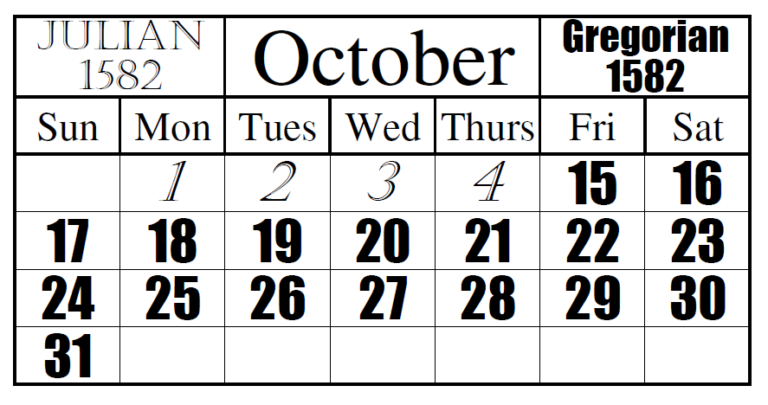In October 1582, the world witnessed a major change in the way dates were calculated with the introduction of the Gregorian calendar. This reform was implemented by Pope Gregory XIII to correct the inaccuracies in the Julian calendar, which had been in use for over 1500 years.
The main difference between the Julian and Gregorian calendars lies in the way leap years are calculated. The Julian calendar had an error of about 11 minutes per year, causing the calendar to drift out of sync with the solar year. This discrepancy had accumulated to about 10 days by the 16th century, prompting the need for a reform.
Calendar In October 1582
Impact of the Calendar Reform on October 1582
As part of the calendar reform, October 1582 had a unique occurrence where 10 days were skipped to bring the calendar back in alignment with the solar year. The day after October 4th, 1582, was designated as October 15th, effectively skipping over the dates from the 5th to the 14th.
This adjustment was necessary to ensure that the equinoxes and solstices aligned with their designated dates and to avoid further drift in the calendar. Despite initial resistance from some countries, the Gregorian calendar eventually gained widespread acceptance and is now the most widely used calendar system in the world.
Conclusion
October 1582 marked a significant moment in history with the implementation of the Gregorian calendar reform. The adjustment made during that month has had a lasting impact on how dates are calculated and observed worldwide. Understanding the history and significance of the calendar reform can provide valuable insights into the evolution of timekeeping and the cultural implications of calendar systems.
